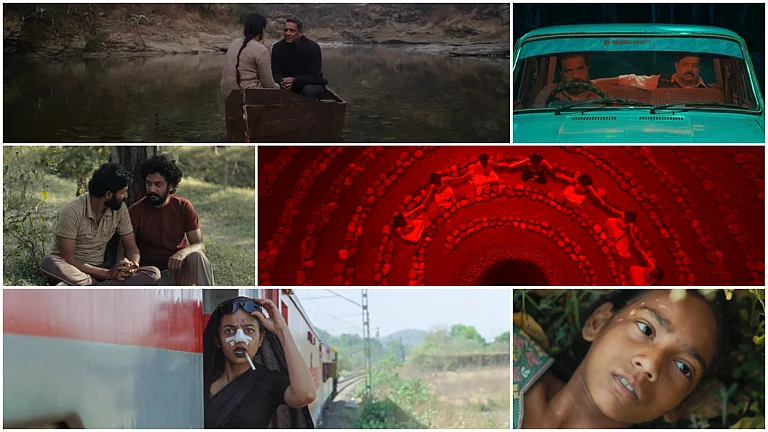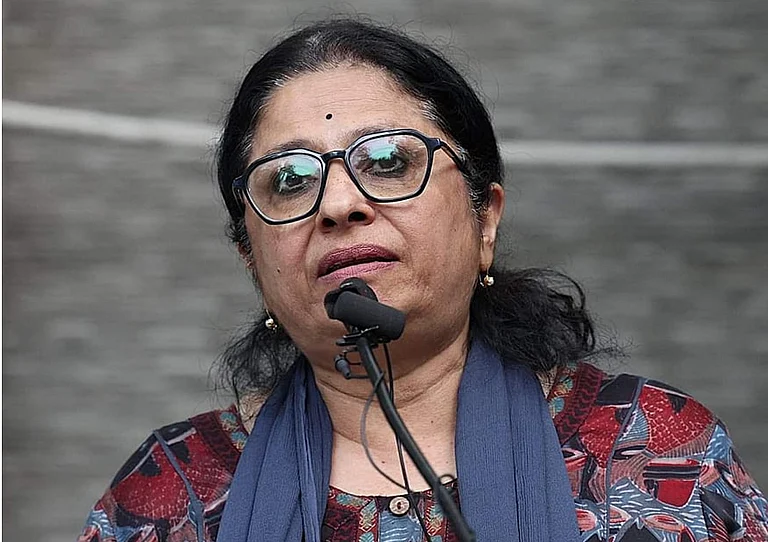The Tamil suspense film Maharaja is set to release in China this Friday, becoming the first Indian film to be screened in China after the normalization of ties between the two countries. This release follows a significant diplomatic breakthrough in October when India and China agreed to resolve their border standoff in Eastern Ladakh. This agreement paves the way for a renewed bilateral relationship, and Maharaja’s release is a symbolic cultural exchange that reflects the shifting dynamics between the two nations.
Maharaja: The Film
Maharaja, directed by Nithilan Swaminathan, is a suspense thriller that has gained widespread acclaim since its Indian release in June. Starring popular actors Vijay Sethupathi, Anurag Kashyap, Mamta Mohandas, and Natty Natraj, the film has been praised for its unique narrative techniques and cultural depth. It holds a high rating of 8.7/10 on Douban, a Chinese movie review platform, positioning it as one of the highest-rated Indian films in recent years. The film is a high-quality production that combines intricate storytelling with cultural nuances, making it especially appealing to international audiences.
While Maharaja is gaining recognition in the international film circuit, its release in China marks a particularly important moment. Titled Yin Guo Bao Ying in Chinese, the film will be the first Indian production to be screened in the country after the bilateral relations between India and China started to improve. This release signals a shift in cultural exchange between the two nations, particularly in the entertainment industry, after a prolonged period of tensions due to military clashes, such as the one that occurred in Galwan Valley in 2020.
The Context of Normalisation of India-China Relations
The film's release comes shortly after a breakthrough in diplomatic relations between India and China. In October, both countries reached an agreement on disengaging and patrolling troops along the Line of Actual Control (LAC) in Eastern Ladakh, resolving a standoff that had lasted more than four years. This agreement followed a meeting between Indian Prime Minister Narendra Modi and Chinese President Xi Jinping at the BRICS summit in Kazan, Russia, where they discussed the revival of various bilateral dialogue mechanisms. This diplomatic breakthrough provided the foundation for Maharaja to be released in China, as it symbolizes a return to normalcy in cultural and people-to-people exchanges between the two countries.
The Influence of Indian Cinema in China
The success of Indian films in China has been evident over the past decade, with movies like Three Idiots, Dangal, and Secret Superstar earning impressive box office numbers and gaining widespread popularity. These films, especially those starring Aamir Khan, resonated with Chinese audiences due to their universal themes, strong emotional storytelling, and relatable characters. Aamir Khan himself has become a household name in China, with his films often being seen as a window into Indian culture, providing Chinese audiences with a different perspective on life in India.
China, with its vast network of approximately 86,000 theatres, boasts the highest number of cinema screens in the world. This massive infrastructure has created an enormous audience for films from both Hollywood and international markets, including Indian cinema. While many Western films focus on global themes, the success of Indian films in China often stems from their ability to address universal issues such as family, personal struggles, and social dynamics, which resonate deeply with the Chinese population.
Reception of Maharaja in China
Chinese film critics are optimistic about Maharaja's prospects in the local market. Wang Peiyu, a prominent film critic on Douban, explained that the strength of Maharaja lies in its "distinctive cultural expression and unique narrative techniques." As a suspense film, the story cleverly conceals key plot points, using editing techniques that create a sense of simultaneity and confusion. Through intricate cross-cutting and complex subplots, the film builds a labyrinthine narrative that is expected to captivate Chinese audiences.
Wang noted that the film's ability to mislead the audience and reveal crucial information only near the end will appeal to Chinese viewers. This technique, which leaves the audience stunned by the sudden unveiling of the truth, is considered a hallmark of sophisticated filmmaking. The suspense genre is popular in China, and Maharaja's subversive narrative approach positions it as a standout film in this genre, even as it competes with major releases like Gladiator II and the local production Her Story.
The Cultural Appeal of Maharaja
In addition to its narrative technique, Maharaja offers a glimpse into Indian culture, which is another reason why it is expected to resonate with Chinese audiences. The film continues the tradition of recent Indian cinema, which often focuses on social issues and incorporates elements of Indian culture, including religious beliefs and moral values. Critics have noted that Maharaja not only provides intellectual stimulation but also serves as an introduction to Indian culture for Chinese viewers. It offers a chance to understand the values and philosophies that shape Indian society, making it a valuable cultural exchange between the two countries.
Li, a Chinese viewer who attended the pre-screening, remarked that the film’s focus on social issues, along with its exploration of religious and moral concepts, provides a refreshing perspective on Indian culture. She pointed out that Indian films have become an important part of the Chinese market, sparking discussions among audiences and generating significant interest in Indian society.
The Significance of Maharaja for the Future of Indian Cinema in China
Its release is more than just the screening of a suspense film; it marks a potential turning point in the relationship between Indian cinema and the Chinese market. Indian films are known for their strong moral core, often rooted in traditional Indian values, which sets them apart from Western films that tend to emphasize secular or individualistic narratives. In contrast, Indian films like Maharaja are deeply connected to cultural and philosophical roots, offering a unique appeal to audiences in China who may be looking for more diverse perspectives in global cinema.
As Hollywood blockbusters like Gladiator II continue to dominate the global market, films like Maharaja offer a different kind of appeal. While epic productions from Hollywood captivate audiences with their scale and production values, films like Maharaja draw attention through their profound themes and regional flavors. This distinct approach makes Indian cinema particularly attractive to audiences who are seeking diversity and depth in their viewing experiences.
The success of Maharaja in China could pave the way for other Indian films to be released in the country, potentially leading to a more robust cultural exchange between the two nations. It demonstrates the growing importance of Indian cinema on the global stage and highlights the role films can play in fostering better international relations. With its engaging narrative and cultural resonance, Maharaja is poised to be a significant player in the future of Indian cinema's global expansion.
In conclusion, the Maharaja's premiere in China is not just an important event for Indian cinema but also a symbol of the potential for cultural diplomacy. As the first Indian film to be screened in China following the improvement in bilateral ties, it represents a new chapter in the exchange of ideas and stories between India and China. Whether it succeeds at the box office or not, Maharaja will likely remain an important milestone in the history of Indo-Chinese cultural relations.



























